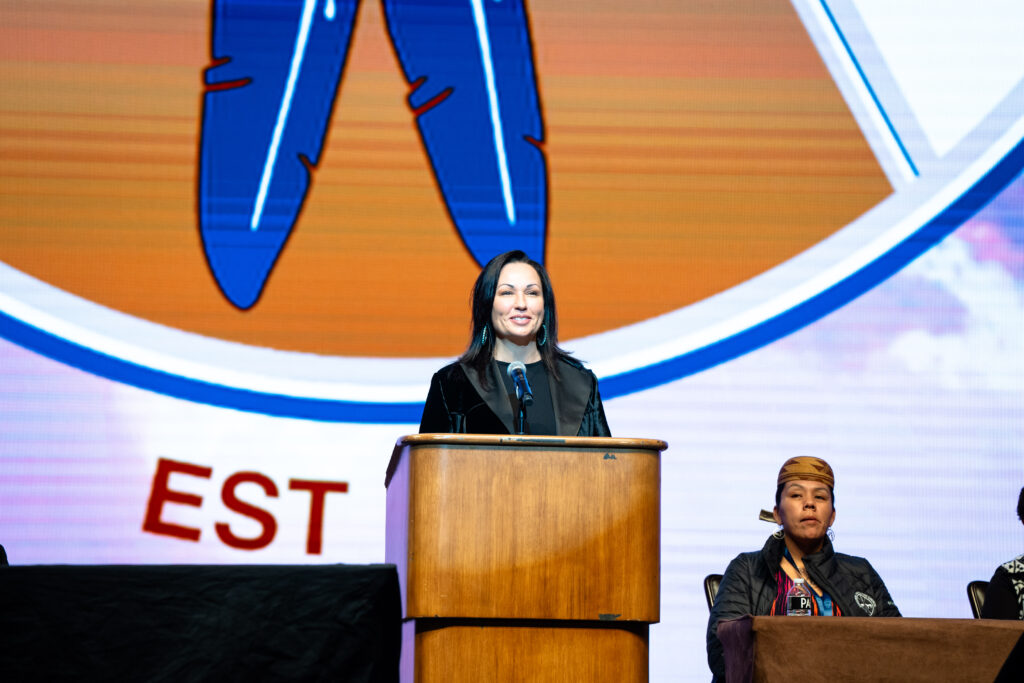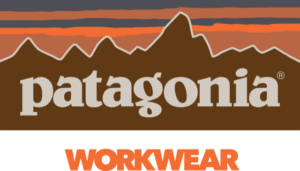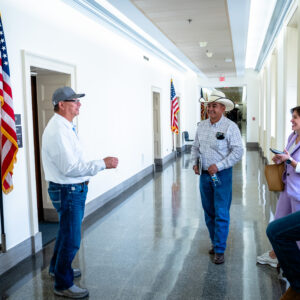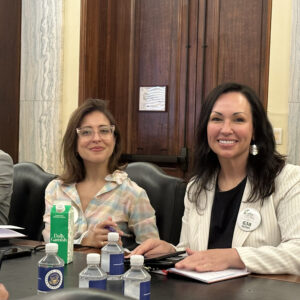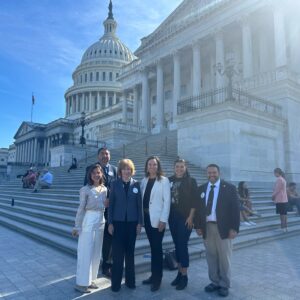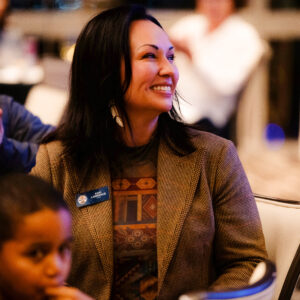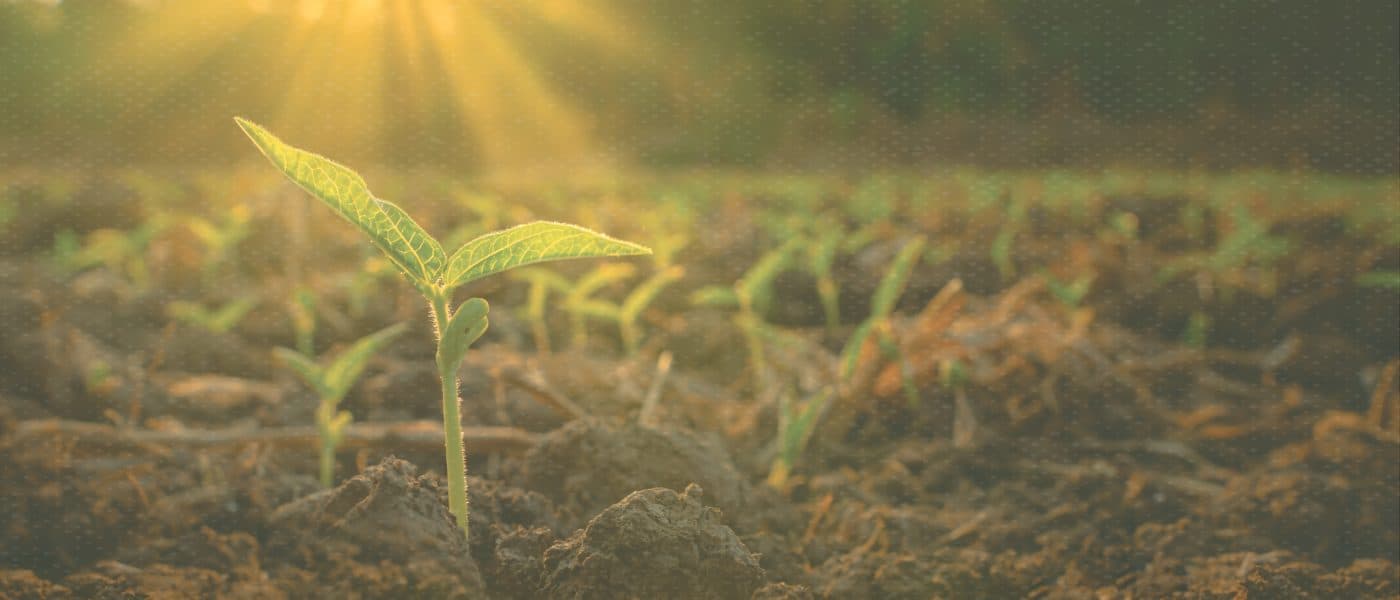Food desert is a term that is used in reference to the absence of good quality, nutritious food in a particular geographic area. But as Chef Bleu Adams of Indigehub says in this episode of Against the Grain, a more appropriate term is “food apartheid” because there’s nothing natural about the absence of good food for Native Americans. For Tribal producers and eaters, the legacy of colonization and land theft carries on in the structures of food apartheid on what is, ostensibly, tribal land. As Kari Jo Lawrence and Abi Fain of the Intertribal Agriculture Council tell us, a variety of forces – from infrastructure to bureaucracy to lack of credit to land and soil issues – make it difficult for tribal communities to produce and distribute their own food. But people like Kari Jo, Abi, and Bleu work tirelessly to find solutions. Listen to this episode to find out more.
Listen to episode five below. And, make sure to subscribe in your podcast app of choice!
Bleu Adams
Bleu Adams (Mandan/Hidatsa/Dine) is the Director of Indigehub.org. She opened her first restaurant in 2011 with her brother, Chef Mark Daniel Mason. Black Sheep Cafe quickly gained a reputation for innovative dishes using indigenous foods and cultural practices.
Bleu was one of the first Native American women to attend the James Beard Foundation’s Entrepreneurial Leadership Program in 2017 and has served on various committees including the Native Women Entrepreneurs of AZ and the Black and Indigenous Food Fund. She was invited to join the American Culinary Corps in 2023, where she promotes Indigenous cuisine and culinary diplomacy globally. Bleu is dedicated to supporting entrepreneurship and community building through Indigenous food sovereignty.
 Abi Fain
Abi Fain
Kari Jo Lawrence
Kari Jo Lawrence was raised on a cattle ranch on the Mandan, Hidatsa, and Arikara Nation in North Dakota near the New Town and Mandaree areas. She attended Dickinson State University, where she earned a degree in Biology. Kari Jo currently serves as the Chief Executive Officer of the Intertribal Agriculture Council. Prior to joining IAC, she enjoyed a 20-year career with the Natural Resources Conservation Service, most of it serving in Indian Country. During her tenure at the Natural Resources Conservation Service, she led successful programs and increased historically underserved participation in each capacity served. Kari Jo wants to continue to see producers gain access to the tools and opportunities to succeed and improve true resilience in the food system. She is proud to have been one of the first recipients of the IAC Scholarship and says “she has found her way back home.” In her free time, Kari Jo enjoys spending time with her family, working on their ranch, and is an avid rodeo competitor.
Watch Videos Featured in this Episode
Red Clay Singers and Wisdom Indian Dancers perform at Farm Aid 2022 in Raleigh, NC, at Coastal Credit Union Music Park at Walnut Creek, on September 24.
Wisdom Indian Dancers perform at Farm Aid 2023 in Noblesville, Indiana, at Ruoff Music Center, on September 23.
Neil Young and Promise of the Real perform “Cortez the Killer” at Farm Aid 2017 at KeyBank Pavilion in Burgettstown, Pennsylvania, on September 16.
AGAINST THE GRAIN EPISODE 4:
FOLEY: Special thanks to our founding partner Patagonia Workwear. Built for folks who bust ass on the daily to leave our home planet better than they found it.
KURN: Welcome back to another episode of Against the Grain. The Farm Aid podcast that brings conversations from farmers organizers and artists to your ears. Just like we do at our annual festival. I’m Jessica Ilyse Kurn.
FOLEY: And I’m Michael Stewart Foley. Jess, to get us into the subject of this episode about this country and our connection to the land. Let’s start off with a performance by the Red Clay Singers from the 2022 Farm Aid Festival in Raleigh, North Carolina.
RED CLAY SINGERS: I really think it’s beautiful that you all have invited us here to get this event started off in a good way. And uh we just really want to share a song about where we come from. The words mean we come from the pine trees and the red clay. We are of this earth.
KURN: That full performance, which also featured members of the Wisdom Indian Dancers, resplendent in their traditional dress, dancing to the rhythm of the drums, is available up on our podcast website: www.Farmaid.org/podcast.
FOLEY: Yeah. Every year the Farm Aid Festival is kicked off with a celebratory performance from the Wisdom Indian Dancers and sometimes others to ground us in the history of the land that we all inhabit and to honor the first peoples because as we all know, the history of the United States was in part built on the oppression and persecution of indigenous peoples marked by land theft violence. And what can only be described as ethnic cleansing.
KURN: In episode three of against the grain, we focused on Black land theft and the loss of millions of acres of Black owned farmland. In this episode, we’ll begin our exploration of Native American agriculture by focusing on food and land sovereignty and that can’t be untangled from European colonization
FOLEY: For a lot of Americans, this all seems like ancient history that we learned about in grade school stories that we learned about Thanksgiving and Pocahontas and Sacagawea leading Lewis and Clark. But as we’ll hear in this episode, Native Americans are still subject to the oppressive laws and treaties put into place over a century ago that results in a kinda systemic marginalization. One part of which has to do with food access and food production,
KURN: Right? So now we’re exploring questions like where are we now and what rights to the 574 federally recognized tribes have to the land. Kari Jo Lawrence and Abi Fain of the Intertribal Agriculture Council and Bleu Adams of Indigehub sat down with us to talk about how tribes feed their communities, given the limited rights.
FOLEY: We were recently introduced to activist and chef Bleu Adams at the Luck Reunion Festival which took place on Willie Nelson’s ranch outside of Austin, Texas, this past March
KURN: Bleu runs the Black Sheep Cafe, a restaurant in Provo, Utah renowned for its innovative dishes that feature indigenous foods and cultural practices. Bleu is an incredible source for frontline access to the issues we are exploring.
BLEU: My name is Bleu Adams. I am Mandan, Hidatsa and Dineh. I come from the communities of Cross Canyon, Arizona and Mandery, North Dakota. I currently reside in Provo, Utah. I am the director of Indigehub.org. We are a 501 c three organization that works to support micro entrepreneurship in rural indigenous communities with a focus on food
FOLEY: when it comes to food sovereignty, which refers to a community’s right to produce and distribute its own food. One of the terms that gets thrown around a lot is food desert usually in reference to the absence of good quality nutritious food in a particular geographic area. But as Bleu tells us, there’s a passivity implied in that term. That’s misleading as if it were somehow a naturally occurring phenomenon.
BLEU: You often hear that term food desert. But in particular cases in indigenous communities, we use the term food apartheid because it’s the result of political policy from the 18 mid 18 hundreds, 1864 specific for the Navajo Nation. There was a campaign they called the Scorched Earth Policy. And the Scorched Earth policy was the destruction of traditional food systems as a means to get the Navajo and surrounding tribes to submit to the government before marching them to a concentration camp in Bos Redondo. That journey we called the Long Walk to the Navajo people. And again, other Tribal members were there for about four years before the treaty of 1868 where they were allowed back on to portions of their land without access to food.
And so the supplement their um diet with processed canned food commodities that were provided by the government. Some of the dishes that we serve today such as fry bread, Navajo tacos, etcetera, come from that
KURN: this food apartheid did not end in the 19th century. Forcing tribes to submit to the U.S. Government has been baked into all policies regarding Tribal lands, their land use and other business transactions.
BLEU: we’re talking over 100 and 60 plus years of federal policy that has created such a chokehold for specifically the Navajo nation. Much of our land is in federal trust and it’s a very lengthy and expensive process to get construction permits, business permitting, to figure out the taxation codes for small businesses and entrepreneurs.
FOLEY: Ultimately, the work that Bleu does at Indigehub aims to circumvent these policies so that community members can be entrepreneurial and keep money and resources within the community.
BLEU: I believe we’re the only demographic with a 24 hour economic leakage where we get paid on the first of the month or on a Friday and the money’s gone to the border towns by Sunday. There’s nowhere to reinvest locally and that’s what we’re working on. That is the priority for us. And to me the answer is food. It really is. It’s access to food. We can’t call ourselves a sovereign nation. We can’t call ourselves uh independent and self sufficient unless we have access to food. Speaking about the Navajo nation is the size of West Virginia, we have 13 operating grocery stores and that serves a fluctuating population of about 350 to 400,000 citizens. You’re traveling up to an hour for a grocery store creates heavier reliance on fast food gas station, food, et cetera. So we work now to empower our local farmers, growers, food producers.
KURN: The picture Bleu paints is pretty grim with this array of challenges facing Tribal communities. It’s hard for them to not only grow food but to grow income to go a little deeper into the problems that Tribal producers face. We spoke at some length with Kari Jo Lawrence and Abi Fain of the Intertribal Agriculture Council. You’ll hear from them when we come back
FOLEY: and just a quick word to say thanks to our founding sponsor Patagonia Workwear Built for the ones who don’t wait around. The ones who prove that it’s possible to make a good living on a living planet.
We’re currently cooking up plans for Farm Aid 2024. Stay tuned to our social media accounts for an announcement in the next few weeks. About when and where the festival will be and how to get tickets. Head to our website to learn more. www.farmaid.org
FOLEY: welcome back. That was Farm Aid board member, Neil Young and Promise of the Real playing Cortez the killer. Just one of Neil’s many songs calling attention to the mistreatment of indigenous peoples that was at Farm Aid 2017 in Burgettstown, Pennsylvania,
KURN: another longtime farm aid friend, Sarah Vogel, known as the farmer’s lawyer suggested we talk to Kari Jo and Abi
LAWRENCE: My name is Keri Jo Lawrence. I am Harada and an enrolled member of the three affiliated tribes that is located on the Fort Worth old Indian reservation where I was raised on a cattle ranch.
FAIN: I’m Abi Fain. I’m the chief legal and policy officer for the Intertribal Agriculture Council. I am a member of the Choctaw nation of Oklahoma, but I’m working out of Tulsa, Oklahoma on the Muskogee Nation.
FOLEY: In the same way that Bleu is describing. Abi, recounted the ways in which bureaucracy which is often a nightmare for all farmers is far worse for the tribes because of historical and jurisdictional complications.
FAIN: There are definitions for Indian country which talk about trust land allotments and restricted fee lands. While there is a lot of Tribal trust, land or land held in trust by the federal government for the benefit of tribes and Tribal people. Uh With that comes a lot of extra steps to participating in federal programs because it’s the federal government holding it in trust. It triggers things like the National Environmental Policy Act and the National Historic Preservation Act. So an individual farmer or rancher will have to do cultural surveys or different kinds of surveys than what a producer operating on fee land would have to do. Or a producer would have to get approvals from the Department of the Interior or their tribe before they can fully participate in a USDA program.
KURN: You know, Michael, when I think about this, I keep coming back to the point that all of this land on this continent was taken from the first peoples and it’s pretty horrific that to this day, one of the biggest underlying problems that Tribal farmers face is who owns the land, and this is within their own nations. As things stand, the U.S. government holds the rights to much of it. The Bureau of Indian Affairs or the BIA is a liaison between the tribes and the U.S. government. But Tribal farmers still run into problems accessing vital agriculture programs that’s like loans and conservation programs and crop insurance. Again, here’s Abi Fain.
FAIN: So if we have a producer who is interested in getting a loan from FSA, have to show that they have ownership or control over the land. If it’s trust land, then they have to go to the BIA or their tribe and get some type of documentation. Uh that says yes, they have control of this land for this amount of time and then take that to the USDA. There are instances where getting that type of information can take months. There are instances where a producer might miss out on a loan, might miss out on an opportunity. Something very unique to Tribal producers on Tribal lands Is that because they’re held in trust by the federal government for the benefit of tribes or individual Tribal members, when when a producer tries to access credit through a bank, banks are historically and even to this day, very reluctant to collateralize the land doesn’t mean they can’t, it just means that they won’t.
FOLEY: None of these bureaucratic hassles are new. Of course, just like Farm Aid, the Intertribal Agriculture Council emerged in response to the farm crisis of the 1980s with a very specific focus on the government manufactured obstacles that blocked the way forward for so many Tribal producers. In fact, in the 1980s, the likelihood that a Tribal farmer or rancher would be foreclosed on was five times greater than the national average.
KURN: The U.S. government undermining the tribe’s abilities to be self sufficient is a theme that continues to this day. As Abi and Kari Jo explained at every turn, the tribes saw their lands taken away and replaced with insufficient substitutions.
FAIN: While there is a lot of uh land, I would say we look at the entire country as being Indian land or Tribal land that was taken. But what is left in trust isn’t what uh people would necessarily consider prime agriculture land and Kari Jo, I know can speak to that specific even within her own tribe.
LAWRENCE: You can look on a map right now. You can look at a Indian reservation in North or South Dakota and you can look overlay a soils map and where all of those, those good soils are at that you could, that are tillable, that are high productive land. They are not owned by Indians, those, those lands are most likely in fee status um and not operated by Indian producers.
KURN: On top of being given this lousy land, the U.S. government went on to build dams on Tribal lands. The problem there being that when you dam a river, the land up the river gets flooded and uninhabitable carry, Joe tells us about the building of the Garrison Dam on the Missouri River in North Dakota. In the 1940s. The effects were devastating for her community and they were ultimately displayed.
LAWRENCE: 98% of our farmland was flooded when, when this all happened in the, in the late 1940s. I grew up in a town called Newtown and that’s where, uh, the Elbow Woods and all the different communities moved, move up onto the higher ground. It was rich, fertile river bottom farmland that, that was taken at that time. And it highly, highly affected our tribe in a negative way. You know, people, you never heard of the word unemployment before. You never heard of the word hungry before. That was unheard of. But after the flooding happened, that’s still living in that and haven’t fully recovered.
FOLEY: The big takeaway seems to be that if the land was valuable in any way, the U.S. government has always found a way to seize control and leave Tribal suffering in its wake. And as you can imagine in the same way that we talked about in episode three, so many Black farmers have been hesitant to engage with the USDA following a century of discrimination and land theft. Similarly, many Native producers won’t even respond to government surveys about farming on Tribal land.
KURN: Yeah. This long history marked by land theft discrimination and fueling widespread distrust only makes it harder for the next generation of Tribal farmers and ranchers to get started. But there is some hope with amazing organizations like Intertribal Agriculture Council and Indigehub.
FOLEY: Thankfully, folks like Abi and Kari Jo and Bleu have given us some reason to be hopeful. Here’s Bleu talking about how her organization Indigehub is bringing a circular economy back to Tribal lands and keeping the wealth within the tribes themselves.
BLEU: These are components of a healthy economy. I see it here. Provo Utah, one of the strongest economies and that’s why we’re here because of that insulated. I think our revenue circulates about 6 to 8 times before it leaves. And it’s that ethos of Mormon to Mormon business, hyper local. We don’t have a single chain in our downtown chain restaurant.
And when we’re talking about restaurants, when you’re talking about buying local and the impact it has on the local economy by reinvesting 35 to 45% of the money immediately in that circling restaurants are unique mom and pop restaurants where they can reinvest up to 85% of that revenue locally before it leaves. That’s why we’re focused on food. That’s why we understand that food is economy. And until we have access to food, we’re not going to build an economy.
FOLEY: So Bleu secured shipping containers to create food hubs and start rebuilding the economy. Why shipping containers? Because over 90% of Navajo land is subject to a complex web of federal bureaucratic rules which makes it extremely difficult to build a structure on their own land. So Bleu thought outside the box and found a mobile solution, enter shipping containers.
BLEU: And right now we have the food hub which is a 40 ft shipping container that we’re converting to provide again, minimal infrastructure for a farmer. And when I’m talking about minimal refrigeration, a sink where she can rinse her vegetables, some shelter where she can lock up her tools and her equipment. And we’re also working with uh Kai’s Pies out in Lagoon Pueblo. He is starting a mobile kitchen for the community. He’s funding it with the sale of pizza, but it will be used to for classes, cooking classes, different community events and also a media studio. So he can tell the story of his community. We don’t want to take ownership over their projects. We just want to provide capital and skills and training and mentorship for them. When we took over the property, it’s 12 little tiny hubs immediately got rid of drug dealers. I mean, when we got there, meth prostitution, assault, et cetera, we’re in year two. Now, every little building is filled. There’s three food businesses, there’s a hair stylist, there’s a coffee shop, we anchored it with cricket just because everybody needs cell surface, cleaned it all up. But the stories.
So when we’re talking about food insecurity, we also have to talk about community violence. We’re not talking about the homicides, the suicides, the assaults, those tie directly into nutrition and access to healthy food
KURN: projects like Kai’s Pies and an effort to bring back the Navajo peach to cite just two examples, are slowly and steadily making a real difference in the community. For more stories from Tribal lands, subscribe and follow Against the Grain
FOLEY: In future episodes, we will continue to illustrate the array of challenges facing Tribal producers from infrastructure to bureaucracy to lack of credit to land and soil issues while also pointing out glimmers of success and hope
KURN: I feel really impassioned about the inequities that Tribal members face in this country. If you do as well, head to our website and learn more about each of these organizations. Go to www.farmaid.org/podcast
FOLEY: And we’d love to hear from you. How did you like this episode? Do you have any questions or comments? email us at podcast@farmaid.org or give us a shout out on Farm Aid social media, which is @farmaid on Instagram, Facebook, Twitter and Threads
KURN: and don’t forget Youtube where you can watch almost 40 years of performances and other content. It means a lot to the podcast. If you share it with your friends and subscribe on your podcast app of choice.
FOLEY: Yes, good reminder. Please like, subscribe and give us a rating wherever you listen to us. Against The Grain was written and produced by us with sound editing by end house media and direction from Don Sarokin.
KURN: Thanks so much to Kari Jo Lawrence, Abi Fain and Bleu Adams for being wonderful guests and helping us work through such complicated issues. And thank you as always for listening to Against The Grain
FOLEY: and a huge thank you to all the farmers out there. We’ll chat with you next time.
KURN: Patagonia workwear, we build durable timeless gear for the ones who prove that food production, skilled trades, construction, and ecosystem restoration can and should cause the least amount of harm. And that it’s possible to make a good living on a living planet.
Special thanks to our founding partner, Patagonia Workwear.
Photo Gallery
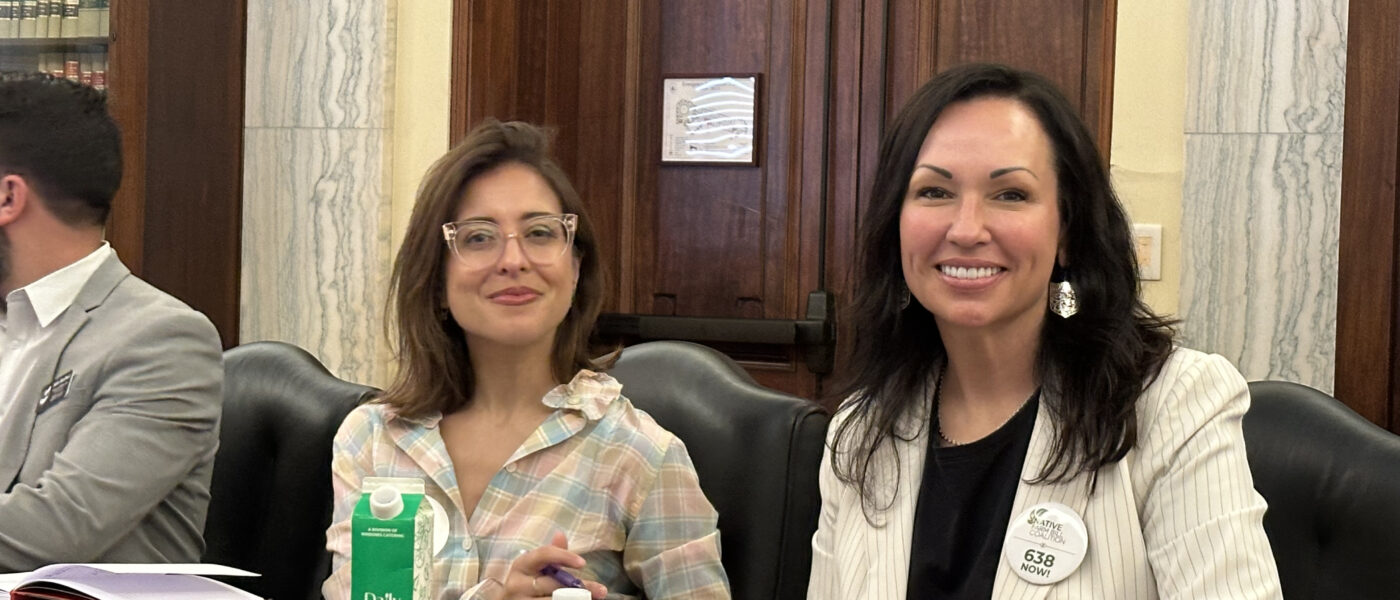
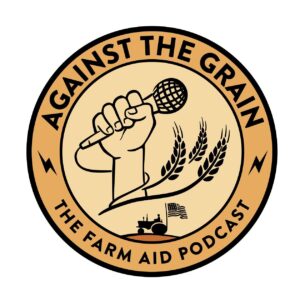 Against the Grain brings the magic of Farm Aid’s annual festival to listeners year-round. Hear from farmers and artists, advocates and food experts, activists and policymakers – all of whom are working towards building a more just and equitable farm and food system.
Against the Grain brings the magic of Farm Aid’s annual festival to listeners year-round. Hear from farmers and artists, advocates and food experts, activists and policymakers – all of whom are working towards building a more just and equitable farm and food system.
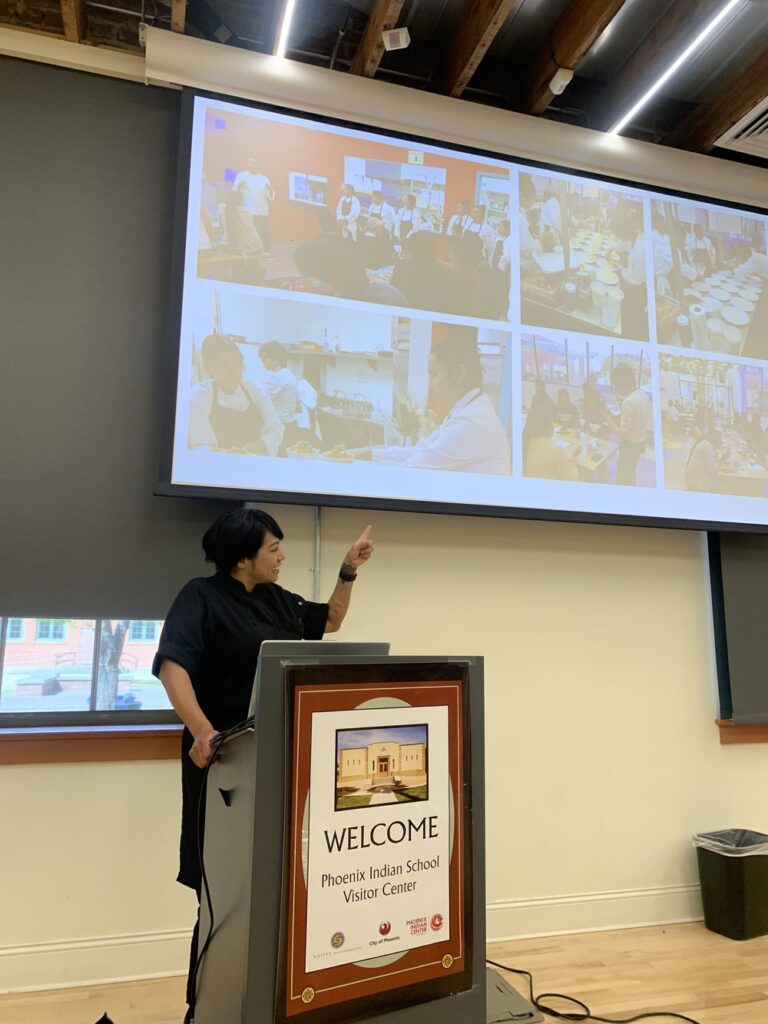
 Abi Fain
Abi Fain